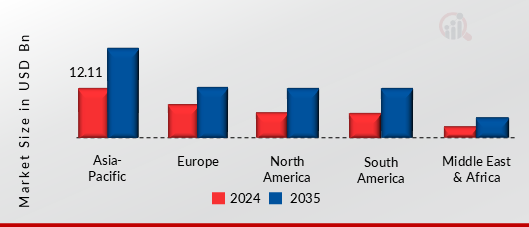Market Trends
Key Emerging Trends in the Foam Insulation Market
The foam insulation market has witnessed significant trends in recent years, driven by various factors influencing construction, industrial, and residential sectors. One notable trend is the increasing demand for energy-efficient solutions amid growing awareness of environmental sustainability. Foam insulation, known for its superior thermal performance, plays a crucial role in enhancing energy efficiency by minimizing heat transfer in buildings and industrial facilities. This trend is particularly pronounced in regions with stringent building codes and regulations aimed at reducing carbon emissions and promoting green building practices.
Moreover, advancements in foam insulation technology have led to the development of innovative products that offer improved performance and versatility. Manufacturers are continually investing in research and development to enhance the thermal resistance, fire resistance, and durability of foam insulation materials. Additionally, the introduction of eco-friendly foam insulation options, such as bio-based foams and recycled content materials, aligns with the growing preference for sustainable construction practices.
Another key trend driving the foam insulation market is the rising construction activities globally, especially in emerging economies. Rapid urbanization, population growth, and infrastructure development projects have fueled the demand for residential, commercial, and industrial buildings, driving the adoption of insulation solutions to meet energy efficiency requirements and enhance occupant comfort. Furthermore, government initiatives promoting energy-efficient construction practices through incentives, rebates, and subsidies have further accelerated the market growth.
The COVID-19 pandemic has also impacted the foam insulation market, albeit with mixed effects. While construction activities temporarily slowed down during the initial phases of the pandemic due to lockdowns and supply chain disruptions, the increased focus on indoor air quality and health-conscious building design has stimulated demand for insulation materials that contribute to better indoor environments. As businesses and homeowners seek to improve ventilation and thermal comfort in indoor spaces, the demand for foam insulation solutions with low volatile organic compound (VOC) emissions and superior indoor air quality performance has surged.
In addition to these factors, the foam insulation market is witnessing a shift towards prefabricated and modular construction techniques, which require efficient insulation solutions that can be easily integrated into off-site manufacturing processes. Prefabricated foam insulation panels and spray foam systems offer advantages such as rapid installation, reduced labor costs, and improved project timelines, making them increasingly popular among construction companies and contractors.
Furthermore, the adoption of stringent building codes and standards, particularly in developed economies, is driving the demand for high-performance insulation materials that comply with energy efficiency requirements and contribute to sustainable building certifications such as LEED (Leadership in Energy and Environmental Design) and BREEAM (Building Research Establishment Environmental Assessment Method). Foam insulation products with superior thermal resistance, such as closed-cell spray foam and rigid foam boards, are preferred choices for meeting these stringent regulatory requirements and achieving higher levels of building performance.
According to the Foam Insulation Market Outlook report, the global market is developing more research to combat these challenges and bring more opportunities for the global market.
Overall, the foam insulation market is poised for continued growth, fueled by factors such as increasing demand for energy-efficient solutions, advancements in insulation technology, rising construction activities, and regulatory initiatives promoting sustainable building practices. As stakeholders across the construction industry prioritize energy conservation, environmental sustainability, and occupant comfort, the demand for innovative foam insulation solutions is expected to remain robust in the coming years. Manufacturers and suppliers that can offer high-performance, eco-friendly, and cost-effective insulation solutions are well-positioned to capitalize on these market trends and drive further expansion in the foam insulation sector.








Leave a Comment